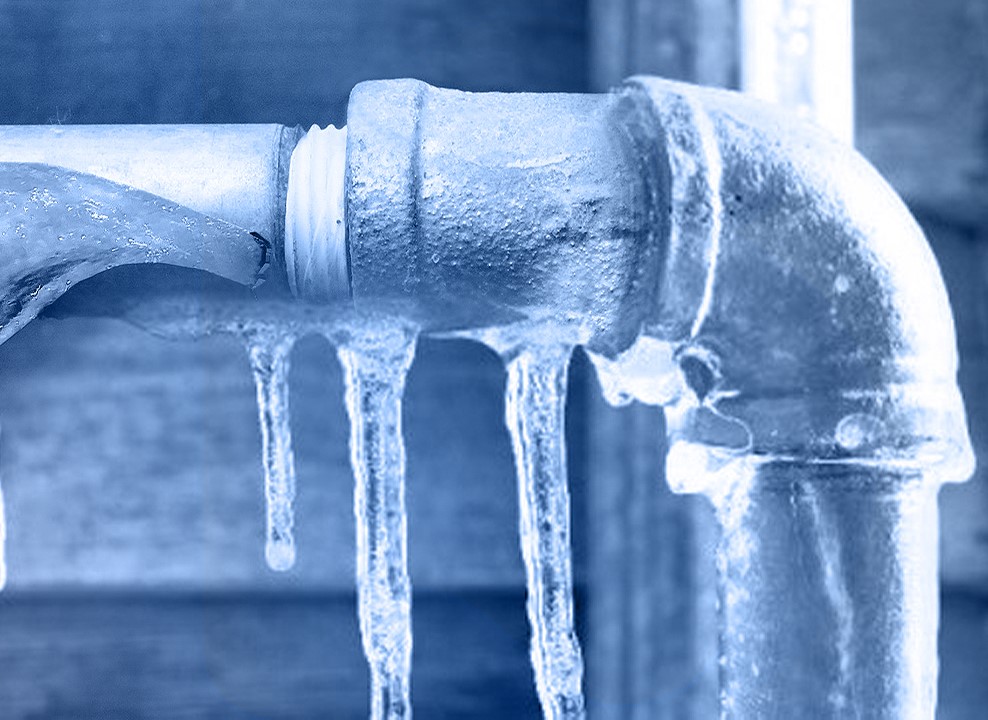Avoiding Frozen Plumbing in Winter: Professional Advice
Avoiding Frozen Plumbing in Winter: Professional Advice
Blog Article
Any individual will have his or her own idea involving How to prepare your home plumbing for winter weather.

Cold weather can wreak havoc on your plumbing, especially by freezing pipes. Below's exactly how to stop it from occurring and what to do if it does.
Introduction
As temperature levels decline, the threat of icy pipelines rises, possibly leading to pricey fixings and water damages. Recognizing just how to stop icy pipes is vital for home owners in chilly climates.
Understanding Icy Pipes
What causes pipelines to freeze?
Pipelines ice up when exposed to temperature levels listed below 32 ° F (0 ° C) for extended durations. As water inside the pipelines ices up, it broadens, putting pressure on the pipe wall surfaces and potentially creating them to break.
Threats and problems
Frozen pipelines can lead to water system interruptions, home damage, and expensive repairs. Ruptured pipelines can flood homes and cause comprehensive architectural damages.
Indications of Frozen Pipes
Recognizing frozen pipes early can avoid them from bursting.
How to determine icy pipelines
Look for lowered water circulation from faucets, unusual odors or noises from pipelines, and noticeable frost on revealed pipelines.
Prevention Tips
Shielding susceptible pipelines
Wrap pipelines in insulation sleeves or utilize heat tape to shield them from freezing temperature levels. Concentrate on pipelines in unheated or outside locations of the home.
Heating methods
Maintain indoor rooms sufficiently warmed, specifically locations with plumbing. Open up cabinet doors to permit cozy air to flow around pipes under sinks.
Shielding Outdoor Pipes
Yard pipes and outside faucets
Disconnect and drain pipes yard hose pipes before winter months. Set up frost-proof spigots or cover outdoor taps with insulated caps.
What to Do If Your Pipelines Freeze
Immediate activities to take
If you suspect icy pipes, maintain faucets open to soothe pressure as the ice thaws. Utilize a hairdryer or towels taken in hot water to thaw pipelines slowly.
Long-Term Solutions
Architectural adjustments
Think about rerouting pipelines far from outside wall surfaces or unheated areas. Add added insulation to attics, basements, and crawl spaces.
Updating insulation
Invest in top quality insulation for pipes, attics, and wall surfaces. Appropriate insulation assists preserve regular temperatures and reduces the risk of frozen pipelines.
Conclusion
Protecting against frozen pipelines calls for aggressive actions and quick reactions. By understanding the causes, indicators, and preventive measures, home owners can safeguard their pipes throughout winter.
5 Ways to Prevent Frozen Pipes
Drain Outdoor Faucets and Disconnect Hoses
First, close the shut-off valve that controls the flow of water in the pipe to your outdoor faucet. Then, head outside to disconnect and drain your hose and open the outdoor faucet to allow the water to completely drain out of the line. Turn off the faucet when done. Finally, head back to the shut-off valve and drain the remaining water inside the pipe into a bucket or container. Additionally, if you have a home irrigation system, you should consider hiring an expert to clear the system of water each year.
Insulate Pipes
One of the best and most cost-effective methods for preventing frozen water pipes is to wrap your pipes with insulation. This is especially important for areas in your home that aren’t exposed to heat, such as an attic. We suggest using foam sleeves, which can typically be found at your local hardware store.
Keep Heat Running at 65
Your pipes are located inside your walls, and the temperature there is much colder than the rest of the house. To prevent your pipes from freezing, The Insurance Information Institute suggests that you keep your home heated to at least 65 degrees, even when traveling. You may want to invest in smart devices that can keep an eye on the temperature in your home while you’re away.
Leave Water Dripping
Moving water — even a small trickle — can prevent ice from forming inside your pipes. When freezing temps are imminent, start a drip of water from all faucets that serve exposed pipes. Leaving a few faucets running will also help relieve pressure inside the pipes and help prevent a rupture if the water inside freezes.
Open Cupboard Doors
Warm your kitchen and bathroom pipes by opening cupboards and vanities. You should also leave your interior doors ajar to help warm air circulate evenly throughout your home.

Hopefully you liked our piece about How to Prevent Your Pipes From Freezing. Thanks a lot for spending some time to read our content. Are you aware of somebody who is curious about the subject? Feel free to promote it. Thanks a lot for your time invested reading it.
Call Today Report this page